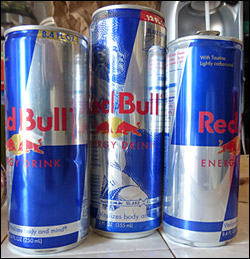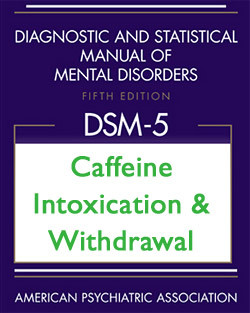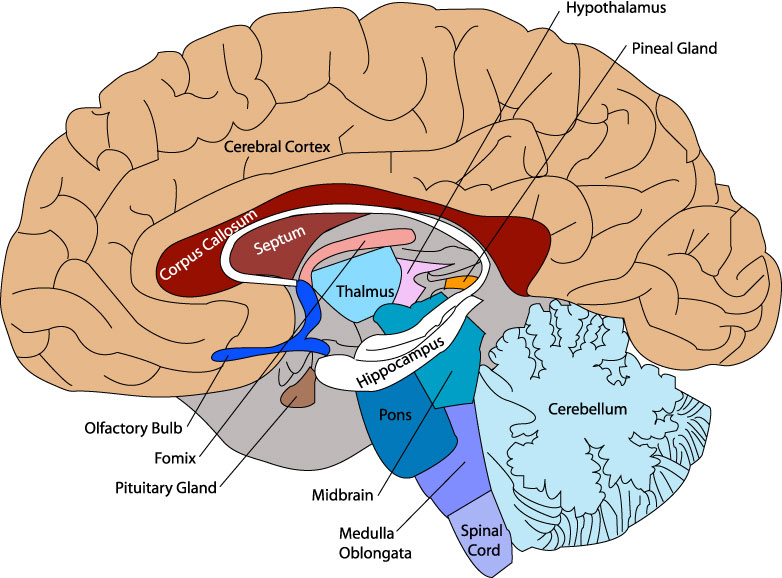There’s no denying that caffeine consumption is now a daily part of American culture. In fact, 90 percent of the U.S. population consumes caffeine in some form every single day, making it the most used drug in the country, pushing caffeine intoxication and withdrawal into the mainstream.
Dave Barry, the American humorist and author, summed up his feelings about caffeine when he wrote, “It is inhumane, in my opinion, to force people who have a genuine medical need for coffee to wait in line behind people who apparently view it as some kind of recreational activity.” Perhaps Mr. Barry didn’t understand how accurate the phrase “medical need” really is.
The most recent of edition of the Diagnostic and Statistical Manual of Mental Disorders (DSM-5), released in May 2013 and published by the American Psychiatric Association (APA), has now included caffeine intoxication and withdrawal syndrome in the manual.
By definition caffeine is a drug. It affects the user’s central nervous system, creating temporary changes in the brain’s chemistry. It is also addictive and can cause withdrawal symptoms when stopped.
A psychology professor at American University and an advisor on the DSM-5 work group said, “The symptoms of caffeine withdrawal overlap with a lot of other disorders and medical problems.”
According to DSM-5, caffeine intoxication can start once more than 250 milligrams of caffeine, two to three cups of coffee or five caffeinated soft drinks, have been consumed.
What Are the Symptoms of Caffeine Intoxication?
- Irregular heartbeat
- Muscle twitching
- Nervousness
- Insomnia
- Rapid speech
- Rambling flow of thoughts
- Difficulty concentrating
In order for a person to be considered intoxicated from caffeine, they must experience at least five of the noted symptoms. This condition must also make it significantly difficult to function at work, in social situations or at home.
Anyone who’s ever tried to cut back their caffeine consumption, or cut it out entirely, might be more familiar with the symptoms of caffeine withdrawal. DSM-5 lists a variety of caffeine withdrawal symptoms.
According to DSM-5, What Are the Symptoms of Caffeine Withdrawal?
- Irritability
- Headache
- Fatigue
- Drowsiness
- Depressed mood
- Difficulty concentrating
- Flu-like symptoms, such as nausea and muscle pain
Withdrawal from caffeine can start at about 12 hours from the last consumption. It peaks at 24 hours, and for most people, all symptoms should run their course in a week or less. Like other drugs, caffeine doesn’t affect everyone in the same way. People who have issues with anxiety, insomnia, diabetes or high blood pressure should avoid caffeine altogether.
Caffeine intoxication was listed in DSM-4, but got an upgrade with the addition of caffeine withdrawal in DSM-5. Not everyone agrees with this. “Caffeine intoxication and withdrawal occur fairly frequently, but only rarely cause enough clinically significant impairment to be considered a mental disorder,” said Dr. Francis Allen, a vocal critic of the DSM-5. “We shouldn’t medicalize every aspect of life and turn everyone into a patient.”
The inclusion of caffeine intoxication and withdrawal in the DSM-5 is unlikely to make the lines at Starbucks shorter or make people drink less caffeinated soda. Some experts suggest that caffeine is more useful and less harmful if used at intermittent times, about once a week, and kept in the range of 100 milligrams, which is equal to one or two standard cups of coffee, or two to three cups of black tea.






